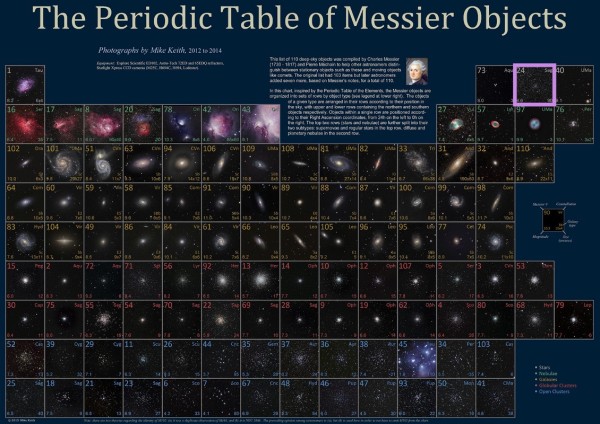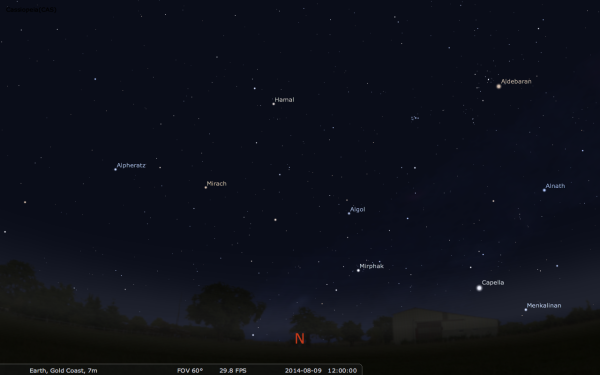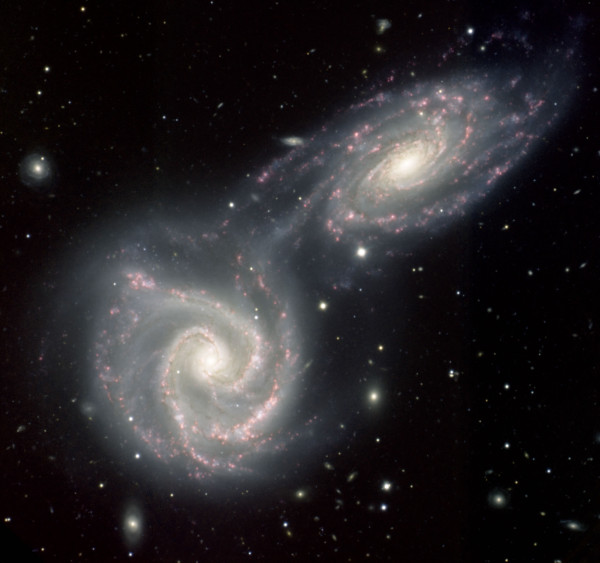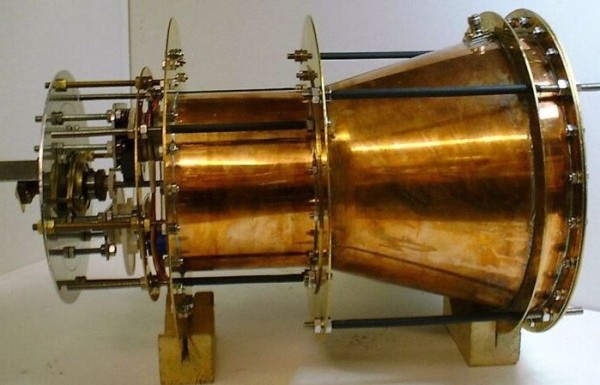"There is a fifth dimension, beyond that which is known to man. It is a dimension as vast as space and as timeless as infinity." -Rod Serling
It's been an action-packed week here on Starts With A Bang, and we've tackled a whole slew of topics you're unlikely to see anyplace else! The past week has seen us take a look at the following:
- Where does cosmic rotation come from? (for Ask Ethan),
- Cartoons for social justice (for our Weekend Diversion),
- The most curious object of all, M24 (for Messier Monday),
- The man who invented the 26th dimension (a stellar contribution from Paul Halpern),
- How to fool the world with bad science, and
- The meteors you've been waiting for (for Throwback Thursday).
As is usually the case, a great number of you have had some great and interesting things to add in our comments sections here on Scienceblogs, so let's dive in to the best of them (and our responses) in this edition of our comments of the week!
From Fill on cosmic rotation: "Well, obviously we know that random quantum fluctuations do exist, and in a way that would seem obvious or else the universe would be perfectly and uniformly distributed with matter and there would be no movement or anything interesting. Hawking had an example in a TV show where he had marbles perfectly distributed and nothing happened, but give one a tiny kick and suddenly gravity takes over and a very complex system of movements evolve of clumps and swirls."
What you're talking about is the notion of gravitational instability. This is something that's true in Einstein's theory -- and he noticed -- but it's also something that's true in Newton's theory as well! If you have a perfectly uniform, infinite grid of equal mass particles, everything will be perfectly balanced and nothing will attract anything preferentially over anything else.
 Image credit: Andrey Kravtsov, University of Chicago, Center for Cosmological Physics, via http://cosmicweb.uchicago.edu/filaments.html.
Image credit: Andrey Kravtsov, University of Chicago, Center for Cosmological Physics, via http://cosmicweb.uchicago.edu/filaments.html.
But put only one imperfection in there, and in short order, chaos ensues. Yes, the big thing you'll see is gravitational clumping begin to occur, but also in there will be tidal effects and forces that cause changes in rotation. You won't see that dominate because while gravitation is a 1/r^2 force, tidal effects scale as 1/r^3, which make them less important on all but the extreme, smallest scales. Still, everything rotates even if you begin with a non-rotating, imperfect system, and that's what we think our Universe is!
Image credit: Useful by Pawel Kuczynski; http://www.pictorem.com/Useful.
From Guy Incognito on pictures that I think are worth more than 1000 words: "I gotta admit a lot of that kinda goes over my head. I just don’t really get what message is being conveyed when someone’s using an angel as a plow. Is it that god creates plants, or god like… motivates farmers to plant things?"
The beauty of good art, at least in my opinion, is that it will make you think of more than one thing, and will lead your mind to ponder questions that it wouldn't normally ponder. For my own part, I didn't think the image, above, was about God or religion at all; I thought it was about humanity exploiting absolutely every resource they can get their hands on. But maybe that was why I titled last weekend's post Cartoons for Social Justice. And for what it's worth, I struggled with this one:
I thought for a long time about when the hook would get the drinker (only towards the end of the drink), about soft drink manufacturers and the capitalist need to get someone hooked on their product, and other ideas along that line before something clicked in my head. "Oh," the voice said, "that's alcohol, and this is about addiction!" It takes me a while sometimes, too.
Image credit: Dan Bush of Missouri Skies, via http://www.pbase.com/image/115380497.
From Rick Whitten on the subject of Messier Mondays: "What should you do to replace Messier Monday? NGC Monday, of course. There might be one or two objects on the list of some interest! I’ve captured all 110 Messier objects with my 10 inch telescope and Canon DSLR (many need improved). I also have more than 45 NGC or IC objects — http://quadradical.com/ngc.php Many of these are worthy of your attention."
No doubt there are some outstanding objects in the Universe that are worth learning about, and having NGC Monday is an idea I've been considering. However, I thought Messier Monday was a daunting commitment; with 110 objects, that was a promise to do one every week for more than two years, and to organized them in such a way that the object-of-interest would always be appropriately visible on the date it went live.
 Image credit: Mike Keith, via http://cosmicneighbors.net/PeriodicMessier.htm.
Image credit: Mike Keith, via http://cosmicneighbors.net/PeriodicMessier.htm.
The NGC -- new general catalogue -- contains 7,840 objects. Unless we're all okay with NGC standing for "Never Gonna Complete [it]," it might not be the best choice. But it's definitely one option I'm considering.
Image credit: Hadronic String linking two particles, via http://int.phys.washington.edu/PROGRAMS/string.jpg.
From eric on the man who invented the 26th dimension: "[I]t appears that modern string theory is trying to resolve a different problem than Lovelace was trying to resolve. So it was 26 needed for Lovelace’s problem (which has since been solved by the discovery of quarks, rendering a 26-dimensional space unnecessary), and 10-11 needed for modern string theory."
Paul Halpern did such a wonderful job on this piece that I was humbled when he volunteered to not only answer this comment, but all the comments he received here, on Medium and on Twitter concerning Claud Lovelace (and his parakeets).
 Image credit: Claude Lovelace with Parakeet (courtesy of Rutgers), via http://www.physics.rutgers.edu/people/images/Lovelace_H.jpg.
Image credit: Claude Lovelace with Parakeet (courtesy of Rutgers), via http://www.physics.rutgers.edu/people/images/Lovelace_H.jpg.
His set of responses is below:
Since I posted my article “The Man Who Invented the 26th Dimension,” about the late physicist Claud Lovelace I have been gratified by the response, including many comments and questions. Some of his former colleagues and friends have written to me with clarifications, corrections, and stories. For the sake of privacy I’m keeping their names confidential.
 Image credit: animal lover VeganMom, via http://veganmom.blogspot.com/2014/06/more-changes-good-and-bad-to-our.h…. These are not Claud's parakeets, but simply some outstanding specimens of these delightful birds!
Image credit: animal lover VeganMom, via http://veganmom.blogspot.com/2014/06/more-changes-good-and-bad-to-our.h…. These are not Claud's parakeets, but simply some outstanding specimens of these delightful birds!
Let's start with the question of his parakeets. He had a one-bedroom apartment in which he bred them and let them roam free. It was close to campus and he lived there for 35 years. Sometimes he would bring in baby parakeets to his department and generously give them away. Two years before he died, he gave the last of his parakeets away to a good friend of his who once worked for his department. So the birds had a good home, and weren't neglected when he passed away.
In general, he had a very kind attitude to animals, lived a vegan lifestyle, and enjoyed feeding squirrels in the park.
He was very fond of music and had an outstanding collection of LPs as well as CDs. He entertained children by playing classical favorites such as Peter and the Wolf. He also composed his own pieces.
 Image credit: screenshot from http://www.nj.com/news/index.ssf/2011/12/longtime_rutgers_professor_wil….
Image credit: screenshot from http://www.nj.com/news/index.ssf/2011/12/longtime_rutgers_professor_wil….
In the article I mentioned that Claud Lovelace donated $1.5 million to his department. That sum funded half of an endowed chair in condensed matter physics, which was matched by another donor. However he also contributed another $3 million that endowed a graduate fellowship and supported new assistant professorships in condensed matter physics.
One of Lovelace’s former colleagues reported that:
“Just before he died, Claud fulfilled a lifelong dream by buying a fine Challis clavichord. He planned to record Bach's 2 and 3 part inventions on the Challis clavichord. He left the clavichord to Rutgers.”
 Image credit: Harpsichord clearing house, retrieved from http://www.audioasylum.com/audio/general/messages/52/526579.html, along with a scathing review.
Image credit: Harpsichord clearing house, retrieved from http://www.audioasylum.com/audio/general/messages/52/526579.html, along with a scathing review.
He (and another former colleague) pointed out that Lovelace’s 26 dimensional model did not solve the tachyon problem only the unitarity problem. Tachyons were eliminated only in 10 dimensional superstring theory. However as the physicist noted:
“Lovelace's discovery opened the door to a rich collection of requirements that consistency of the dual model/string theory puts on the structure of spacetime -- not just on its dimension but also on its geometry.”
Another reader observed that Lovelace attended the “University of Cape Town,” not “Capetown University,” and that his key paper appeared in Physics Letters B, not Physical Review Letters.
Two more clarifications: the idea of quarks had been proposed before Lovelace’s breakthrough, but the development of the true mechanism for the strong force, now known as QCD was only in its infancy. Also, Lovelace, whom I characterized as a “precocious young researcher” at the time of his discovery, was already in his 30s.
Thanks to Claud Lovelace's former colleagues and friends for their helpful comments!
And thank you to Paul for not only a fantastic debut article for Starts With A Bang, but for taking the time to answer so many comments and questions!
From Geoffrey Landis on the topic of the EmDrive/Cannae Drive: "Although I agree with the conclusion that there is a long long way to go before these results overcome my skepticism, I do want to warn a little against too much overreaction. This should never have hit the press; it’s way too early to draw conclusions. But it’s a little over the top to call it “bad” science
Science is about replication. Replication requires doing the experiment. Or, at a minimum, not laughing at other people who do the experiment.
Now: the actual results of the experiment are pretty minor. The results they show, first, didn’t replicate the results that they were attempting to verify, second, falsify the actual hypothesis that they were testing, and, third, are pretty low in magnitude– probably spurious, in my (professional*) opinion. But this is the way science is done: you test stuff. You present your results. Other scientists then critique the results, point out flaws and sources of noise and bias.
It’s rather brutal, actually. But if your result holds up to the criticisms (and most don’t), maybe you’ve pushed the boundaries of science.
These results don’t– yet. They are not yet reporting consistent results (in that their results differ significantly from those of other researchers). They have not yet eliminated possible spurious effects.
That’s science."
There are a lot of comments I received here, and they fell into a few different categories:
- People absolutely convinced that this is real, this is robust, this is the future of spaceflight and I'm just in denial,
- People who were upset that I misrepresented the "null drive" based on the NASA abstract (available at the time I wrote the article) and not the full paper (which wasn't),
- People claiming that Wired UK's follow-up article (published after mine) answered my objections,
- And finally, from people who understand how science works in some fashion or other.
Let me explain a few things: one, I completely agree with Geoffrey's comments, above, and that's why I posted them. But two, my intent was never to say that this is total garbage and that no one should waste their time researching devices that could surprise us.
To quite the contrary, it was to state that if you think you have an idea that pushes any sort of boundary, you have to do a lot more than validate it with a marginally competent test. You need to subject it to intense experimental rigor, and that includes careful controls, reproducibility, and robustly significant results, among other things. The N-rays results (to which Michael Richmond had an amazing comment as well) were a stellar example of where this failed, and all of those same signs are at play here. I'm not saying this device is a fraud, but I'm saying that if you want scientifically-minded people to begin giving credulity to these results, you need much better results.
And finally...
Image credit: Michael Menefee (Fort Photo on flickr), via https://www.flickr.com/photos/fortphoto/7823333570/in/set-7215763498951….
From John McC (from down under) on the topic of the Perseids: "Great post Ethan. Can you also let us Aussies know where to look too?"
Yes! You might think that if you're south of the equator, you're going to have problems finding a meteor shower whose radiant is this far north. But even from, say, Gold Coast, Australia (just to pick a place), all you need to do -- and apologies because this is going to sound flippant but isn't -- is look North, above the horizon. Like, right here:
 Image credit: me, using the free software Stellarium, via http://stellarium.org/.
Image credit: me, using the free software Stellarium, via http://stellarium.org/.
Even though you're unlikely to get a glimpse of Cassiopeia, you can find Mirphak, the brightest star in the constellation of Perseus, in the late-night/early morning Australian skies. But about 35-to-50% of the Perseid meteors will rise above the northern horizon as seen from most Australian latitudes, so all you have to do is look north and wait!
Many people have pointed out that the full (super)Moon's light pollution will be severe, and this is true, but so what? The Perseids will still -- even with that -- put on the best meteor shower of the year so far, and will only be outdone by the Geminids in December!
Thanks for a great week's worth of comments and for giving me so much to respond to on a Saturday morning. Come back next week for another great set of adventures into the Universe, only on Starts With A Bang!





Just so you know, the musical instrument in the picture isn't a clavichord, but a harpsichord, and not even one from when they were really in use, but a modern version (original harpsichords didn't have pedals, that's a modern addition that imitates pianos). I know because I own a harpsichord and have read a lot about them.
Clavichords are quite small instruments shaped like an oblong box, and work by striking the strings with very thin "hammers" directly fixated to the keys (they dont use the complicated mechanism that pianos use). The main problem with clavichords is that their sound is very weak and doesn't have a lot of sonority, enough only for a small room, never for concert music. You can see one in action here: https://www.youtube.com/watch?v=9WuVVE2t-Vk
Harpsichords are more complicated and usually larger instrument (there was a form, called a "virginal", that was similar in shape and size to a clavichord, but wasn't used for concerts, only for practice). In these instruments, the strings are plucked instead of hit, through an ingenious mechanism and they have more loudness and sonority. Besides, they can have several sets of strings with an octave higher tuning or sound modifying effects that allowed the player to modify how the instrument sounds during a performance. The only problem with harpsichords was that it wasn't easy to vary loudness, and although they suited musicians all thorugh the Baroque period, they were eventually displaced by the piano (whose name comes from the words "piano" and "forte", "quiet" and "loud"; ironic that nowadays they are called simply "pianos" and modern instruments are characterized by the capability of being very loud; it wasn't so for the first primitive pianos, or "fortepianos", like the ones played by Mozart and Beethoven). You can see a harpsichord in action, and an explanation of how it works here: https://www.youtube.com/watch?v=71x4MSlpGUk